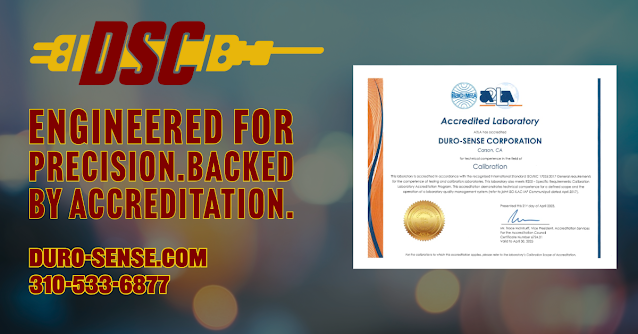When you need reliable temperature measurement, you can’t afford to gamble on accuracy. That’s why Duro-Sense Corporation builds high-performance thermocouples, RTDs, and temperature sensor assemblies that deliver consistent results in demanding environments. From aerospace and power generation to food processing and pharmaceutical manufacturing, Duro-Sense sensors help you maintain safe, efficient, and compliant processes.
However, high-quality sensors only deliver their full value when backed by calibration you can trust. Duro-Sense takes this seriously. Our in-house testing and calibration laboratory holds ISO/IEC 17025 accreditation, ensuring your sensors arrive and stay calibrated to the highest international standards.
What Is ISO/IEC 17025 Accreditation?
ISO/IEC 17025 sets the global standard for testing and calibration laboratories. It confirms that a lab has the technical expertise, proper procedures, and traceable measurements necessary to deliver accurate results. Accreditation bodies don’t hand out this recognition lightly; they perform rigorous audits to check equipment quality, staff qualifications, and data integrity.
When you use a temperature sensor from Duro-Sense, you know it has undergone calibration in a lab that meets strict requirements for accuracy, repeatability, and traceability.
What Does This Mean for You?
- Trustworthy Accuracy
Your operations depend on precise temperature measurements. A small error can lead to safety risks, product waste, or failed audits. Duro-Sense’s accredited calibration lab ensures your sensors give you the data you need to make critical decisions with confidence. - Compliance Made Simple
Many industries are subject to regulatory standards that require traceable calibration. By using Duro-Sense sensors and recalibration services, you simplify compliance with FDA, ISO 9001, AS9100, and GMP requirements, avoiding costly issues during inspections. - Faster, Reliable Recalibration
All sensors drift over time, and periodic recalibration ensures your processes remain within specification. Duro-Sense’s in-house accredited lab allows you to recalibrate your sensors quickly and accurately, reducing downtime and ensuring continuous reliability. - Global Recognition
ISO/IEC 17025 accreditation carries significant weight worldwide, meaning that customers and auditors across borders recognize the validity of your calibration certificates, thereby supporting seamless global operations.
Long-Term Partnership
Choosing Duro-Sense means you gain a partner committed to your success. We combine rugged sensor design with precise calibration support, helping you reduce risk, improve efficiency, and protect your people and products.
Why It Matters
You don’t just need a temperature sensor. You need accurate data to run your facility safely, efficiently, and in compliance with industry standards. Duro-Sense delivers sensors engineered for harsh environments, backed by accredited calibration, so that you can focus on your process with confidence.






